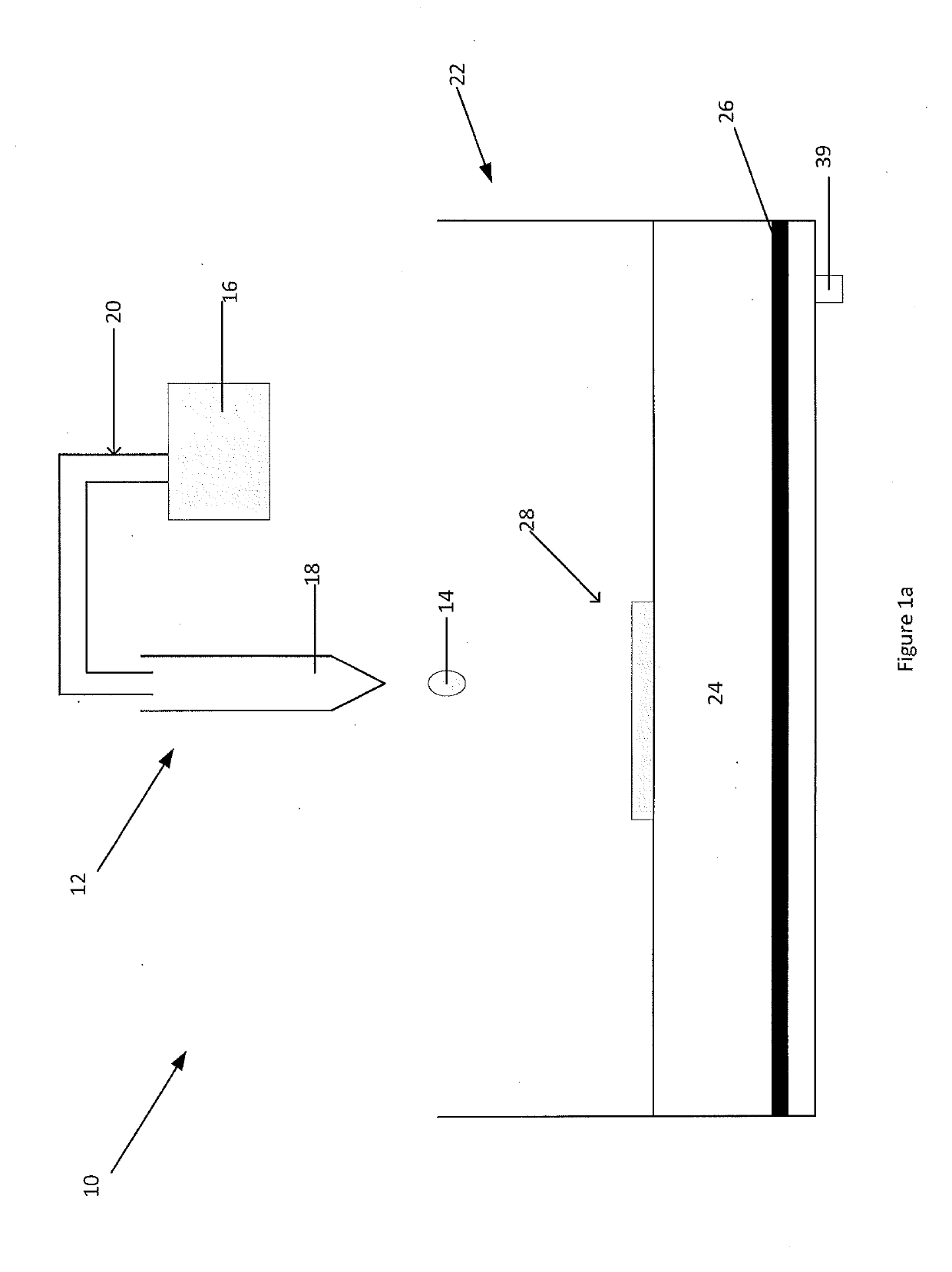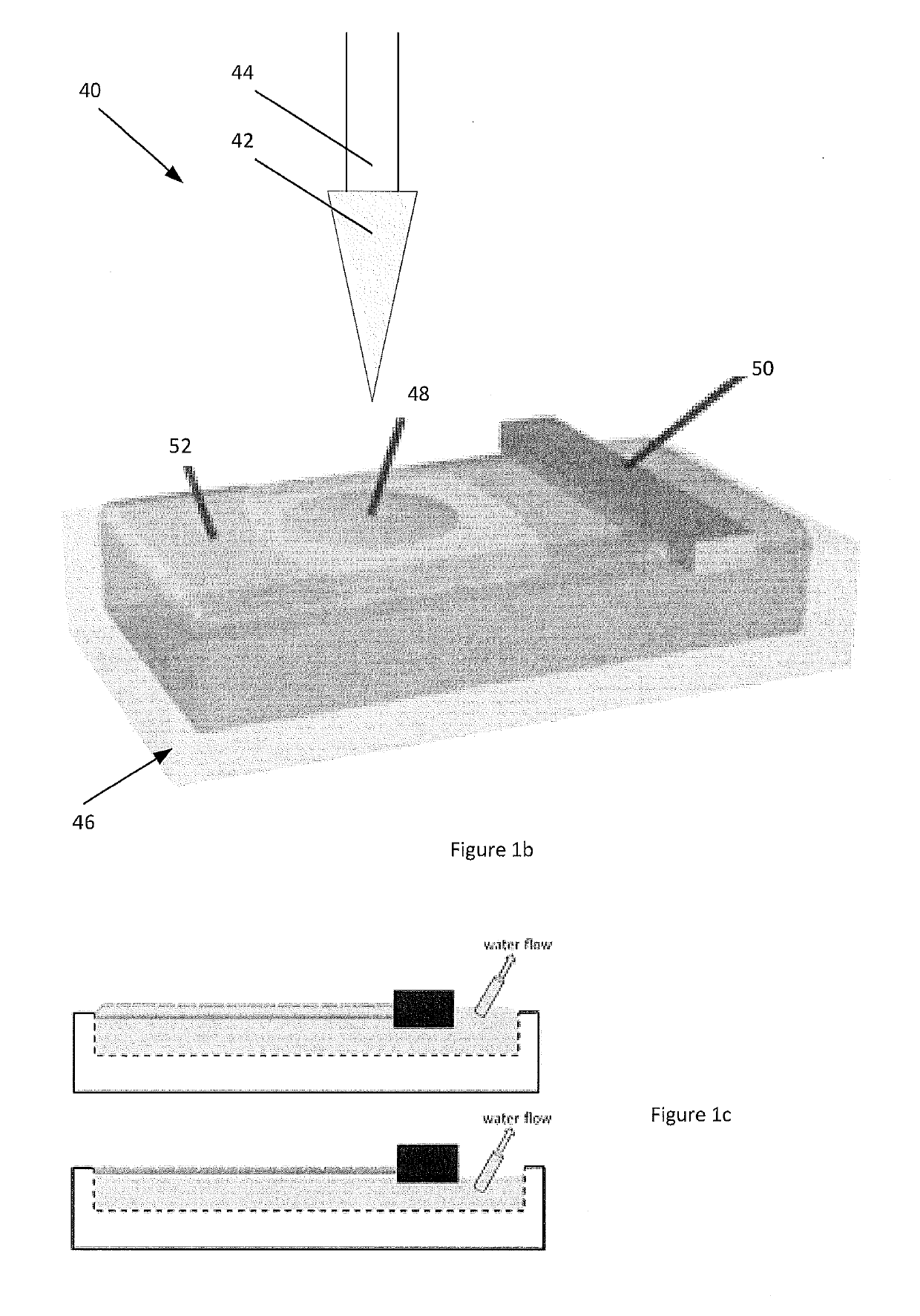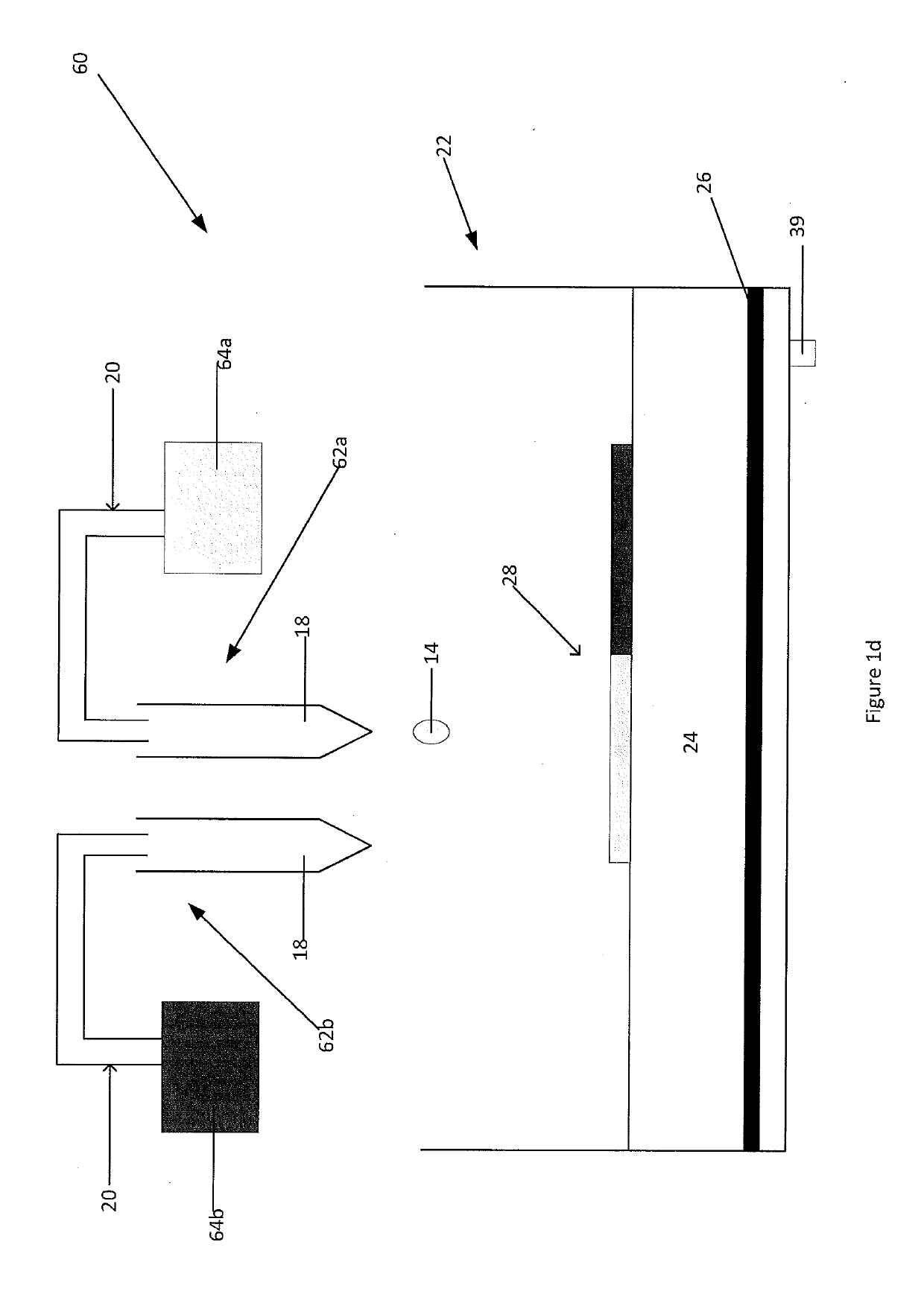Method and apparatus for producing large-area monolayer films of solution dispersed nanomaterials
a nanomaterial and solution dispersed technology, applied in the field of nanomaterials, can solve the problems of high vacuum machinery, limited growth of graphene by vapor deposition, and laborious, error-prone steps,
- Summary
- Abstract
- Description
- Claims
- Application Information
AI Technical Summary
Benefits of technology
Problems solved by technology
Method used
Image
Examples
Embodiment Construction
[0034]The disclosure is directed at a large-area monolayer or monolayer film of solvent or solution, dispersed nanomaterials and a method and apparatus for producing same. In one embodiment, the nanomaterials are solvent dispersed two-dimensional (2D) nanomaterials, however, the nanomaterials may also be one-dimensional (1D) nanotubes). In some embodiments the nanomaterials may be exfoliated. Other films, such as, but not limited to, patterned films and multi-layer films (pattered or not) are also contemplated. In one embodiment, the films are generated at the air-water interface in a water-filled container via a process amenable to the coating of a large area substrate by batch processing by continuous roll-to-roll transfer.
[0035]In a preferred embodiment, the disclosure describes a method of assembling the nanomaterials into tiled films where the nanomaterials are associated edge-to-edge or are partially overlapping to produce the monolayer film.
[0036]Turning to FIG. 1a, a schemat...
PUM
| Property | Measurement | Unit |
|---|---|---|
| diameter | aaaaa | aaaaa |
| thickness | aaaaa | aaaaa |
| thickness | aaaaa | aaaaa |
Abstract
Description
Claims
Application Information
 Login to View More
Login to View More - R&D
- Intellectual Property
- Life Sciences
- Materials
- Tech Scout
- Unparalleled Data Quality
- Higher Quality Content
- 60% Fewer Hallucinations
Browse by: Latest US Patents, China's latest patents, Technical Efficacy Thesaurus, Application Domain, Technology Topic, Popular Technical Reports.
© 2025 PatSnap. All rights reserved.Legal|Privacy policy|Modern Slavery Act Transparency Statement|Sitemap|About US| Contact US: help@patsnap.com



